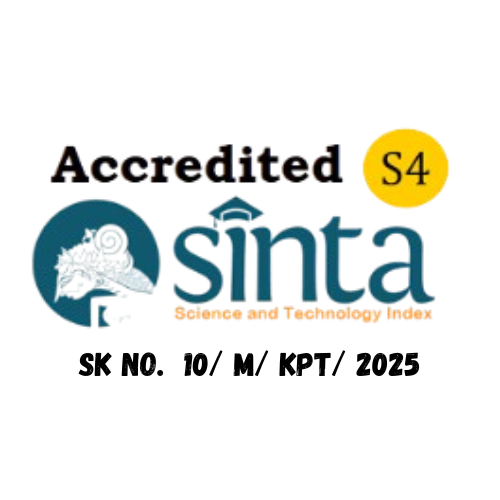The OEE and Six Big Losses Integration To Increase Steamer Machine Effectiveness Value (The FMEA approach in MSMEs Marrone Brownies)
Abstract
The problem that often occurs in production target are not achieved is breakdown engine. Machines are the core of production. As is the case UMKM Marrone is a home industry for making brownies that uses machines as foundation of its production. One of the machines used is steamer ks-601. Steamer machine is a machine used to steam a brownies. The damage that occurs to the steamer engine is due to lack of maintenance, causing the steamer engine performance to not be optimal. The methods used to reduce engine damage are Overall Equipment Effectiveness, six big losses, and Failure Mode and Effect Analysis. OEE aims to improve the performance of a device. Six big losses are six losses caused by the use of ineffective equipment. FMEA is a factor that affects failure with the aim of obtaining factors that require further treatment. The results of the application of OEE found that the average calculation of the OEE of the steamer was 82.19%, still below the JIPM standard, which was 85. Then based on the six big losses, the breakdown losses were 6.08%, set up & adjustment losses were 5.21%, idling minor & stoppage losses were 21.42%, reduced speed losses were 1.48%, process defect losses were 5.04%, and reduced yield 0%. Analysis using the FMEA method shows that the highest RPN is at the turn of the fire adjust switch 175. Then the proposed improvement is carried out using the automatic maintenance method with the CILT stage.
References
Erna, R. S. d., 2017. Autonomous Maintenance pada plan II PT. Ingress Malindo Ventures. Jurnal Universitas Trisakti.
Fitriadi, M. S., 2018. Integrasi Overall Equipment Effectiveness (OEE) dan Failure Mode And Effect Analysis (FMEA) Untuk Meningkatkan Efektifitas Mesin Screw Press di PT. Beurata Subur Persada Kabupaten Nagan Raya. Journal Optimasi vol 4 no 2, pp. 2477-5479.
Gazperz, V., 2012. Lean Six Sigma for Manufacturing and Service Industries. Jakarta: PT. Gramedia Pustaka Utama.
Puspitasari, N. B. &. M. A., 2014. Penggunaan FMEA Dalam Mengidentifikasi Resiko Kegagalan Proses Produksi Sarung ATM (Alat Tenun Mesin) (Studi Kasus PT. Asaputex Jaya Tegal). Jurnal Teknik Industri UNDIP, pp. 93-98.
Render, H. d., 2014. Manajemen Operasi. Jakarta: Salemba Empat.
Rinawati, D. I. &. D. N. C., 2014. Analisis Penerapan Total Productive Maintenance (TPM) Menggunakan Overall Equipment Efectiveness (Oee) Dan Six Big Losses Pada Mesin Cavitec Di PT. Essentra Surabaya. Prosiding SNATIF, pp. 21-26.
Sant'Anna, A., 2012. Probabilic Priority Number For Failure Mode and Effect Analysis. International Journal of Quality and Reliability Management, p. 349.
Shinde, V. B. V. M. d. M., 2014. Application Of 7 Ouality Control (7QC) Tools For Countinous Improvement Of Manufacturing Processes, India: Mumbai University.
Suliantoro, H. e. a., 2017. Penerapan metode Overall Equipment Efectiveness dan Fault Tree Analysis Untuk Mengukur mesin Reng. Jurnal Teknik Industri Undip vol 12 no 2, pp. 105-118.

This work is licensed under a Creative Commons Attribution-NonCommercial-ShareAlike 4.0 International License.













